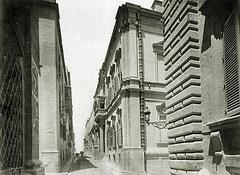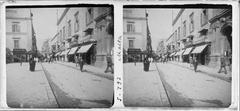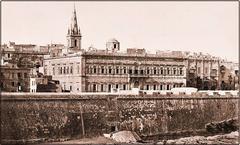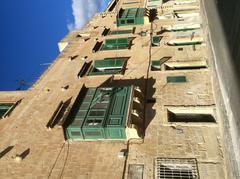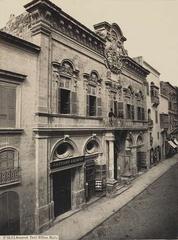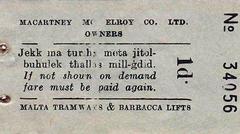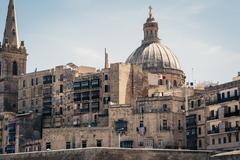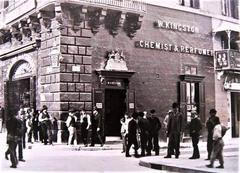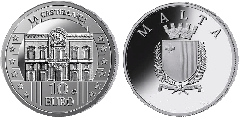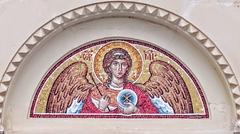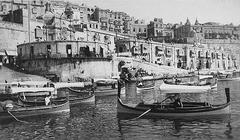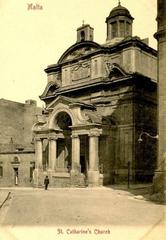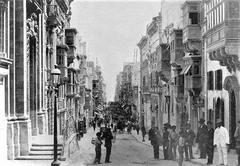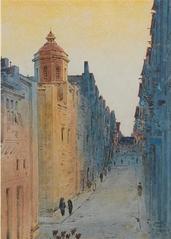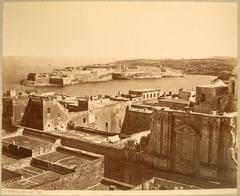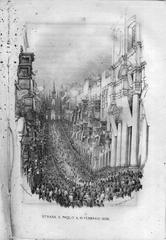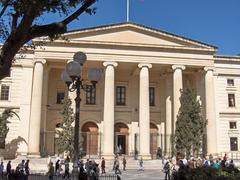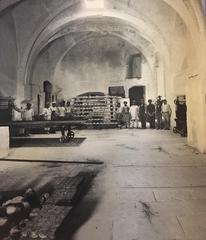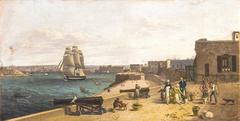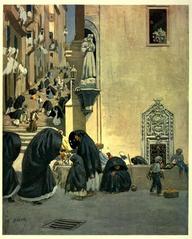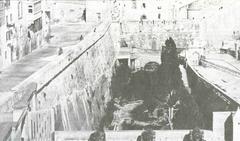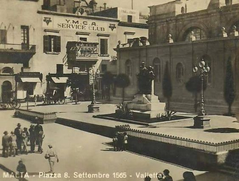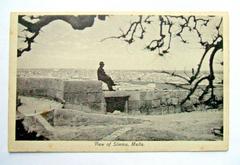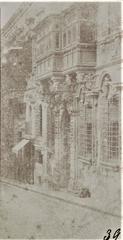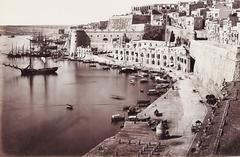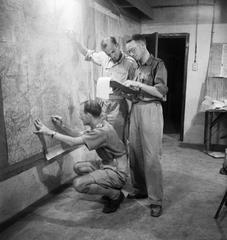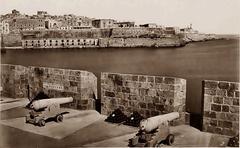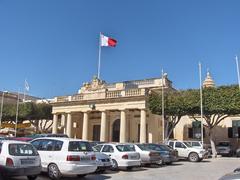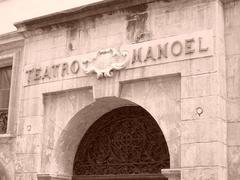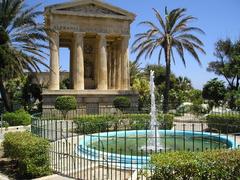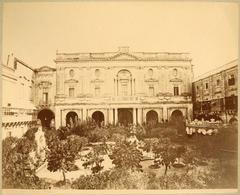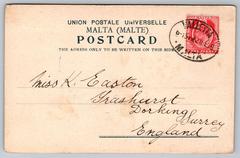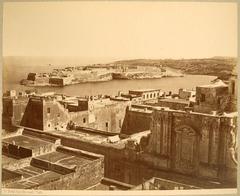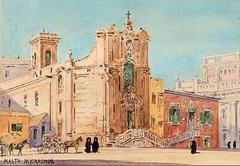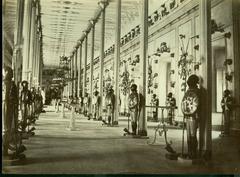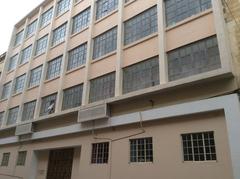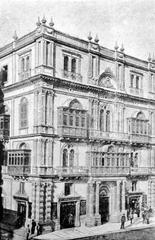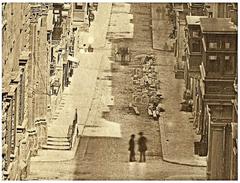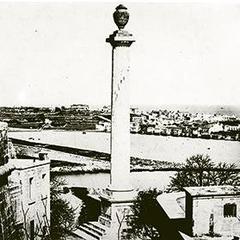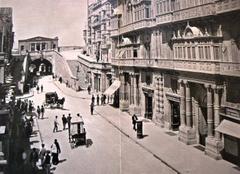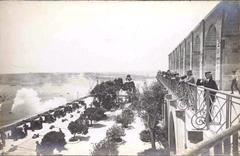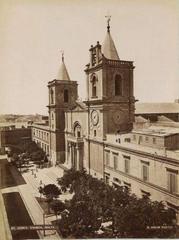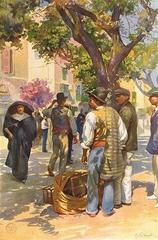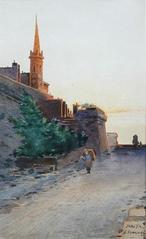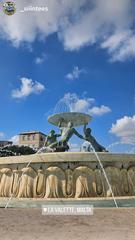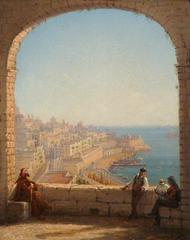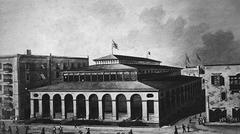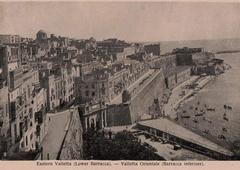St. Andrew’s Scots Church, Valletta, Malta: Visiting Hours, Tickets, and History
Date: 15/06/2025
Introduction
Situated in the heart of Valletta, Malta’s capital and a UNESCO World Heritage site, St. Andrew’s Scots Church stands as a unique testament to the island’s religious and cultural diversity. As Malta’s first Neo-Gothic ecclesiastical building and the oldest non-Catholic church on the islands, it offers a distinctive alternative to Valletta’s Baroque splendor. Founded in the mid-19th century to serve the Scottish Presbyterian and wider Protestant community during British colonial rule, the church is a living monument to Malta’s intertwined history with Britain and the broader Commonwealth. Today, it is an active center of worship, community, and remembrance, welcoming locals and visitors alike to explore its architecture and rich narrative. (St. Andrew’s Scots Malta, Australian High Commission Malta, Visit Malta)
Historical Background
Origins and Early Years
St. Andrew’s Scots Church’s roots lie in the 19th-century British colonial era, when Malta’s strategic Mediterranean location attracted British military and administrative personnel. The influx of expatriates created a need for Protestant places of worship. The church’s initial establishment emerged from the efforts of the Scottish Presbyterian and Methodist communities, with the site originally acquired in 1824 by Reverend John Keeling for Methodist use. By the 1850s, the Church of Scotland had taken stewardship, and in 1857, the current Neo-Gothic church—designed by Maltese architect Giuseppe Bonavia—was completed. (Wikipedia)
Architectural Significance
St. Andrew’s Scots Church is a rare Neo-Gothic landmark in Malta, contrasting the city’s prevalent Baroque churches. Architect Giuseppe Bonavia blended traditional Gothic Revival features—pointed arches, ribbed vaults, and stone tracery—with local Maltese limestone. The church’s façade is modest, with a bellcote and pointed-arch windows, in keeping with the Presbyterian tradition’s emphasis on simplicity. The interior, with its high vaulted ceiling, wooden pews, and stained glass, creates an atmosphere of quiet dignity. (National Inventory of the Cultural Property of the Maltese Islands)
Ecumenical Legacy and Community Role
St. Andrew’s has played a central role in Malta’s Protestant and Reformed Christian traditions, especially within a predominantly Catholic society. From its origins, the church served as a spiritual home for Scottish military, sailors, expatriates, and their families. In 1974, it officially became a joint congregation of the Church of Scotland and the Methodist Church of Great Britain, reflecting a longstanding ecumenical partnership. Services are held in English and draw a diverse congregation from over twenty nationalities. The church’s inclusive ethos extends to joint services and community outreach with other Christian denominations, including Anglican and German-speaking congregations. (St. Andrew’s Scots Malta, Living Together Malta)
ANZAC Memorials and Wartime Connections
During World War I, Malta became known as the “Nurse of the Mediterranean” for its role as a hospital base for wounded soldiers, particularly those from the ANZAC (Australian and New Zealand Army Corps) forces during the Gallipoli campaign. St. Andrew’s houses stained glass memorials and plaques honoring the sacrifice of Australian and New Zealand soldiers who died in Malta. These elements underscore the church’s enduring connections to the Commonwealth and its ongoing role in remembrance and commemoration. Annual ANZAC Day and Remembrance Sunday ceremonies are held here. (Australian High Commission Malta)
Social Outreach and Cultural Impact
St. Andrew’s Scots Church has maintained a tradition of social outreach since the days of Rev. Dr. George Wisely, who championed education and healthcare for the underprivileged. The church continues to engage in community programs, charity events, cultural lectures, and musical concerts—serving as a hub for expatriates, tourists, and local residents. Its architectural elegance, cultural significance, and warm community life make it a vibrant presence in Valletta. (Times of Malta)
Visiting Information
Opening Hours
- Monday to Friday: 10:00 AM – 4:00 PM
- Saturday: Closed (except for special events)
- Sunday: Open for worship services at 10:30 AM
Times may vary for public holidays or special events. Always check the official website or Facebook page before visiting.
Tickets and Admission
- Entry is free of charge.
- Donations are welcome to support the church’s maintenance and mission.
Accessibility
- The main entrance is at street level, and assistance is available upon request.
- Some interior areas may have steps or uneven flooring due to the building’s historic nature.
- The church is accessible for most visitors, but those with mobility challenges are encouraged to contact the church in advance.
Guided and Virtual Tours
- Guided tours can be arranged upon request, especially for groups.
- Virtual tours and additional resources may be available via the church’s website or social media.
Location and Getting There
Address: 210 Old Bakery Street, Valletta, Malta
The church is a 10-minute walk from Valletta’s City Gate and main bus terminus. Valletta’s compact layout means St. Andrew’s is within easy reach of other major attractions such as St. John’s Co-Cathedral and Upper Barracca Gardens. There is no dedicated parking; the nearest public parking is in Floriana.
Find the church on Google Maps
Architectural and Artistic Highlights
- Façade: Modest limestone design with pointed arches and bellcote.
- Interior: High, vaulted nave, wooden pews, and a raised chancel.
- Stained Glass: Windows featuring biblical scenes and Scottish saints, as well as ANZAC memorial glass.
- Memorial Plaques: Honoring Scottish regiments, ANZAC soldiers, and notable congregation members.
- Organ: Historic pipe organ used for services and concerts.
Photography is permitted except during services or private prayer. Please be discreet and respectful.
Community and Cultural Activities
- Services: Held in English; all are welcome regardless of faith or background.
- Concerts: The church’s acoustics make it a popular venue, especially during the Valletta Baroque Festival (Valletta Baroque Festival).
- Lectures and Events: Talks on Maltese history, Scottish heritage, and religious themes.
- Charity Outreach: Food drives and social initiatives.
Dress Code and Visitor Etiquette
- Modest dress required: shoulders and knees covered.
- Remove hats upon entering the sanctuary.
- Silence is appreciated during services and prayer.
- Refrain from eating, drinking, or using mobile phones inside.
- Donations are encouraged to support preservation.
Nearby Attractions
Combine your visit with other Valletta highlights:
- St. John’s Co-Cathedral: Baroque masterpiece and Caravaggio art (St. John’s Co-Cathedral).
- Upper Barracca Gardens: Panoramic Grand Harbour views (Visit Malta).
- National Museum of Archaeology: Malta’s prehistory (Heritage Malta).
Frequently Asked Questions (FAQ)
Q: Are tickets required?
A: No, entry is free. Donations are appreciated.
Q: What are the visiting hours?
A: Monday–Friday 10:00 AM – 4:00 PM; Sunday services at 10:30 AM.
Q: Is the church accessible?
A: Yes, at street level. Some areas have steps; assistance available.
Q: Is photography allowed?
A: Yes, except during services or private prayer.
Q: Can I arrange a tour?
A: Guided tours are available by request—contact the church in advance.
Q: Is there parking?
A: No dedicated parking; use public parking in Floriana.
Practical Tips for Your Visit
- Check updated hours on the official website.
- Arrive early for Sunday services or special events.
- Engage with volunteers for deeper insights into the church’s history.
- Support the church via donations or by purchasing souvenir booklets.
- Respect the sacred space and local customs.
Summary
St. Andrew’s Scots Church is more than just a striking Neo-Gothic landmark; it is a living symbol of Malta’s layered identity, religious diversity, and enduring ties to Scotland, the ANZAC nations, and the broader Protestant world. Its architecture, memorials, and active community life offer profound insights into Malta’s colonial and wartime history, as well as its ongoing commitment to ecumenism and social outreach. With free admission, central location, and proximity to Valletta’s major sites, St. Andrew’s is an essential stop for anyone interested in Maltese heritage. Before your visit, check the latest information online and consider enhancing your experience with the Audiala app for guided tours and insider tips.
Sources and Further Reading
- This guide draws on the following resources for detailed and up-to-date information:
- (St. Andrew’s Scots Malta)
- (Australian High Commission Malta)
- (Visit Malta)
- (St. Andrew’s Scots Malta Services)
- (Times of Malta)
- (National Inventory of the Cultural Property of the Maltese Islands)
- (Malta Uncovered)
- (Church of Scotland)
- (Valletta Baroque Festival)
- (St. John’s Co-Cathedral)
- (Heritage Malta)
Recommended visuals:
- High-resolution images of the church’s Neo-Gothic façade (alt: “St. Andrew’s Scots Church neo-Gothic façade in Valletta”)
- Interior with stained glass and memorial plaques (alt: “St. Andrew’s Scots Church interior with stained glass”)
- Interactive map showing the church’s location and nearby Valletta attractions.
